
How to Use DPDT Switch: Examples, Pinouts, and Specs
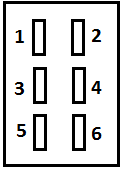
 Design with DPDT Switch in Cirkit Designer
Design with DPDT Switch in Cirkit DesignerIntroduction
A Double Pole Double Throw (DPDT) switch is an electromechanical device that can control two separate circuits, allowing for switching between two different outputs for each circuit. This versatile switch is commonly used in applications where it is necessary to alternate between two different power sources or to reverse the polarity of a circuit. DPDT switches are widely used in motor control, audio equipment, and various other electronic projects.
Explore Projects Built with DPDT Switch
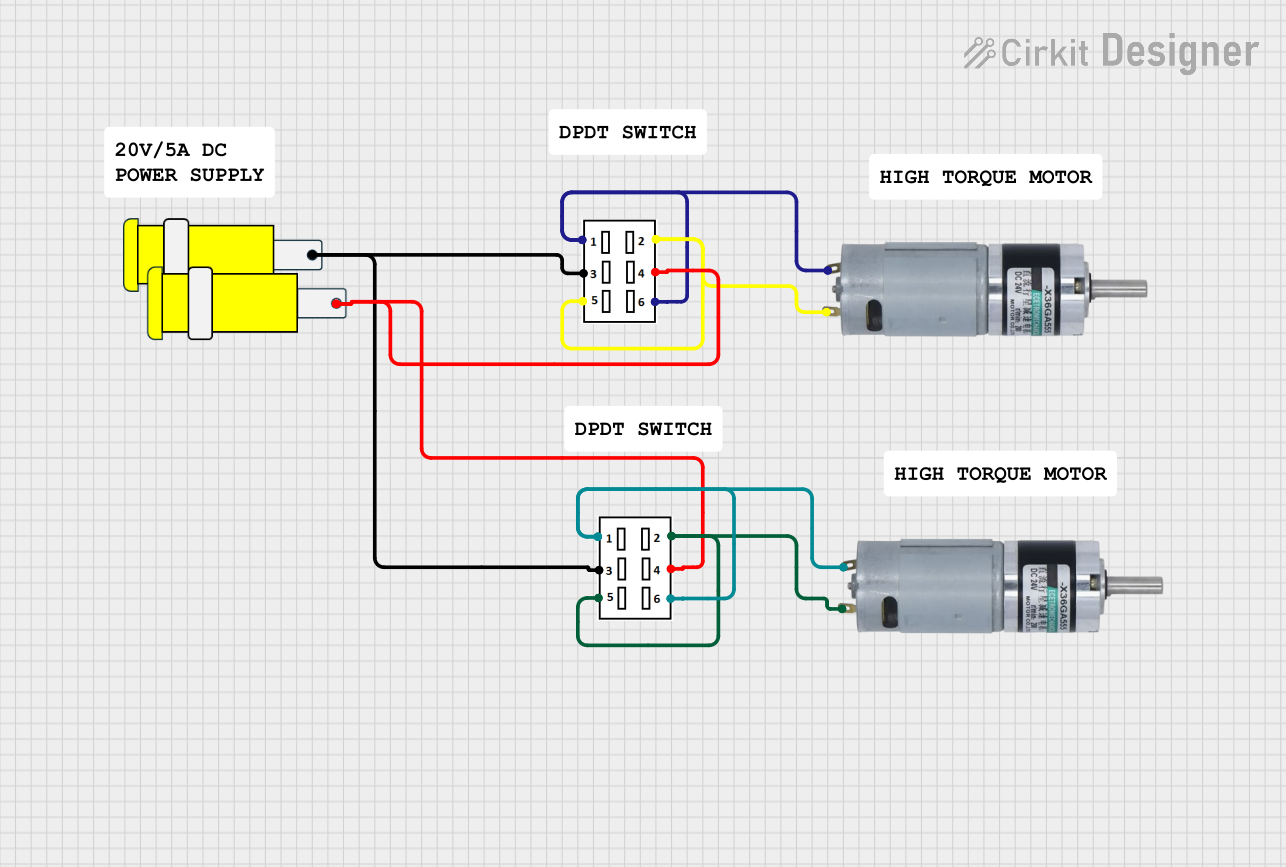
 Open Project in Cirkit Designer
Open Project in Cirkit Designer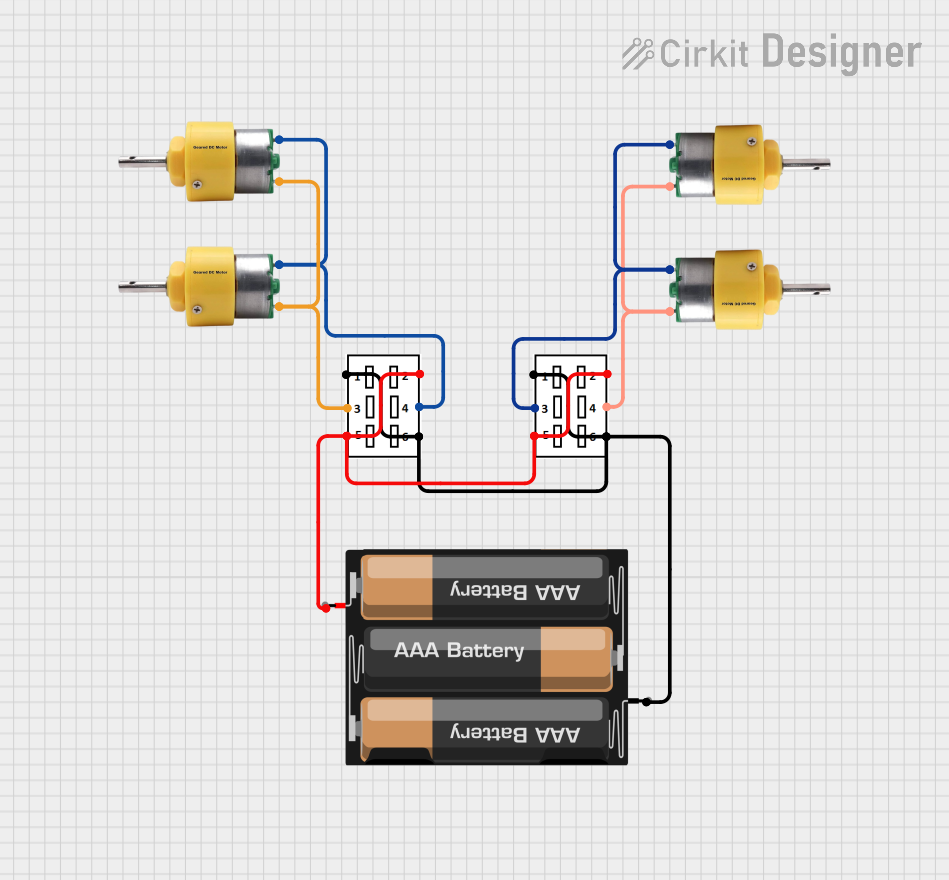
 Open Project in Cirkit Designer
Open Project in Cirkit Designer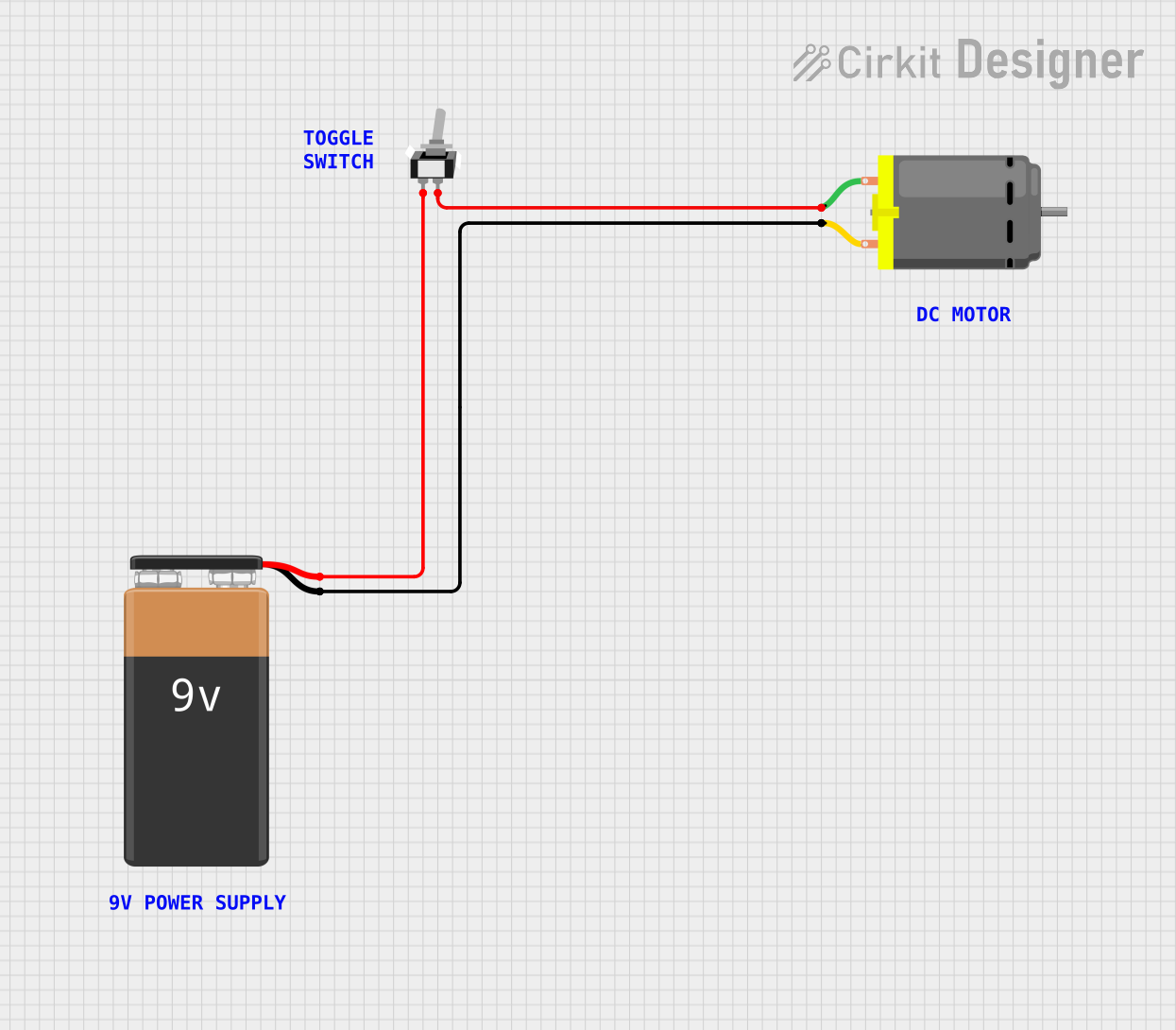
 Open Project in Cirkit Designer
Open Project in Cirkit Designer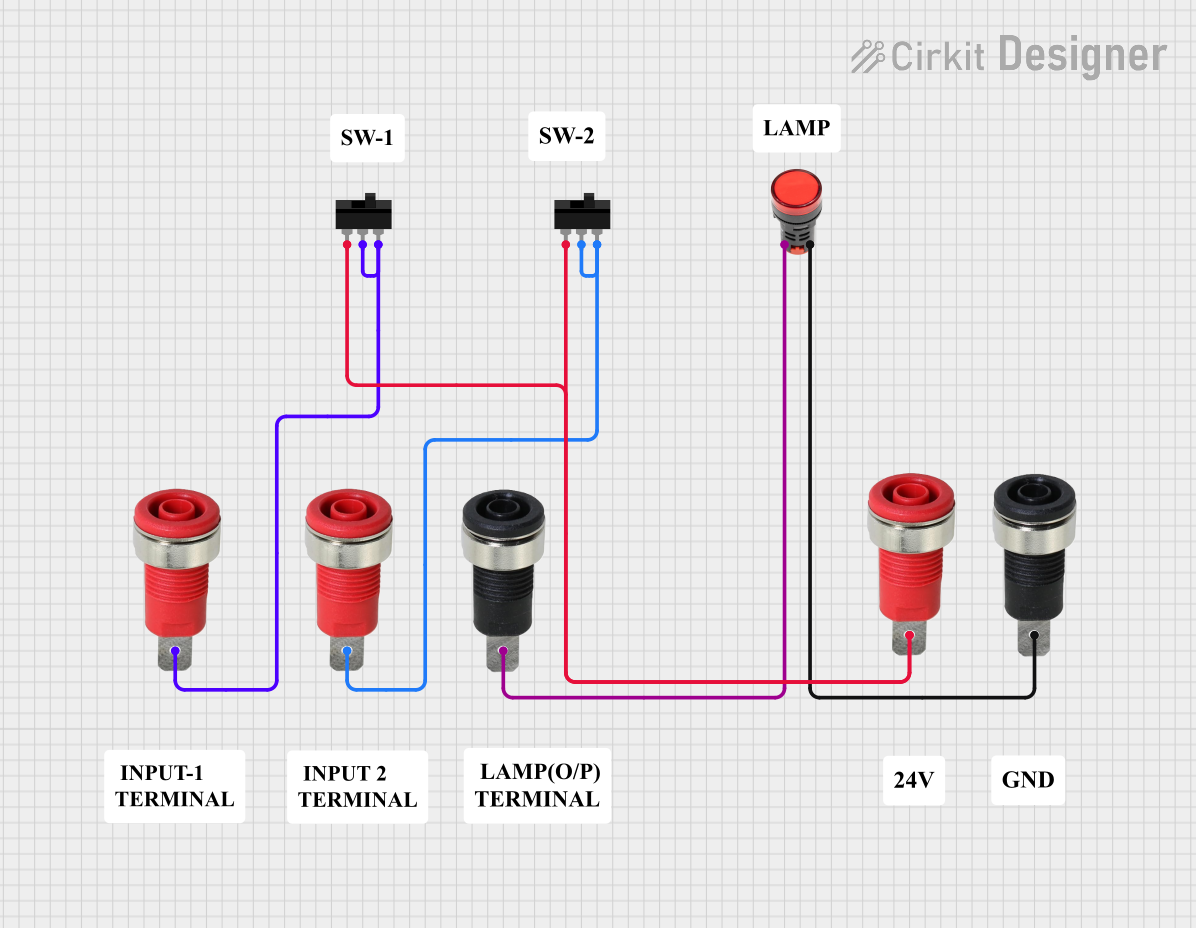
 Open Project in Cirkit Designer
Open Project in Cirkit DesignerExplore Projects Built with DPDT Switch

 Open Project in Cirkit Designer
Open Project in Cirkit Designer
 Open Project in Cirkit Designer
Open Project in Cirkit Designer
 Open Project in Cirkit Designer
Open Project in Cirkit Designer
 Open Project in Cirkit Designer
Open Project in Cirkit DesignerTechnical Specifications
Key Technical Details
| Parameter | Value |
|---|---|
| Voltage Rating | 250V AC / 30V DC |
| Current Rating | 5A |
| Contact Resistance | ≤ 50 mΩ |
| Insulation Resistance | ≥ 1000 MΩ |
| Dielectric Strength | 1500V AC for 1 minute |
| Mechanical Life | 50,000 cycles |
| Electrical Life | 10,000 cycles |
Pin Configuration and Descriptions
A DPDT switch typically has six terminals. The pin configuration is as follows:
| Pin Number | Description |
|---|---|
| 1 | Common terminal for Pole 1 |
| 2 | Normally Closed (NC) terminal for Pole 1 |
| 3 | Normally Open (NO) terminal for Pole 1 |
| 4 | Common terminal for Pole 2 |
| 5 | Normally Closed (NC) terminal for Pole 2 |
| 6 | Normally Open (NO) terminal for Pole 2 |
Usage Instructions
How to Use the Component in a Circuit
- Identify the Pins: Refer to the pin configuration table to identify the common, normally closed, and normally open terminals for each pole.
- Connect the Common Terminals: Connect the common terminals (pins 1 and 4) to the input power sources or signals.
- Connect the Output Terminals: Connect the normally closed (pins 2 and 5) and normally open (pins 3 and 6) terminals to the desired output circuits.
- Switch Operation: When the switch is in one position, the common terminals are connected to the normally closed terminals. When the switch is toggled to the other position, the common terminals are connected to the normally open terminals.
Important Considerations and Best Practices
- Current and Voltage Ratings: Ensure that the current and voltage ratings of the switch are not exceeded to prevent damage.
- Debouncing: Mechanical switches can produce noise or "bounce" when toggled. Consider using debouncing techniques in your circuit design.
- Mounting: Securely mount the switch to prevent mechanical stress on the terminals.
Example: Connecting a DPDT Switch to an Arduino UNO
Here is an example of how to connect a DPDT switch to an Arduino UNO to control the direction of a DC motor.
Circuit Diagram
Arduino UNO
+5V -------------+
|
[DPDT Switch]
|
GND -------------+
Code Example
// Define the pins connected to the DPDT switch
const int switchPin1 = 2; // Common terminal for Pole 1
const int switchPin2 = 3; // Common terminal for Pole 2
void setup() {
// Initialize the switch pins as inputs
pinMode(switchPin1, INPUT);
pinMode(switchPin2, INPUT);
// Initialize serial communication for debugging
Serial.begin(9600);
}
void loop() {
// Read the state of the switch
int switchState1 = digitalRead(switchPin1);
int switchState2 = digitalRead(switchPin2);
// Print the switch state to the serial monitor
Serial.print("Switch State 1: ");
Serial.println(switchState1);
Serial.print("Switch State 2: ");
Serial.println(switchState2);
// Add your logic to control the motor based on the switch state
// For example, you can use an H-bridge to control the motor direction
delay(500); // Delay for stability
}
Troubleshooting and FAQs
Common Issues Users Might Face
Switch Not Working:
- Solution: Check the connections and ensure that the switch is properly wired. Verify that the voltage and current ratings are within the specified limits.
Switch Bounce:
- Solution: Implement debouncing techniques in your circuit or code to filter out noise caused by mechanical bouncing.
Incorrect Output:
- Solution: Double-check the pin configuration and ensure that the common, normally closed, and normally open terminals are correctly identified and connected.
FAQs
Q1: Can a DPDT switch be used to reverse the polarity of a motor?
- A1: Yes, a DPDT switch can be used to reverse the polarity of a motor by swapping the connections between the common and normally open/closed terminals.
Q2: What is the difference between a DPDT switch and a SPDT switch?
- A2: A DPDT switch can control two separate circuits, while a Single Pole Double Throw (SPDT) switch can control only one circuit.
Q3: How do I debounce a DPDT switch in software?
- A3: You can debounce a DPDT switch in software by adding a small delay (e.g., 50ms) after detecting a state change or by using a debouncing library.
By following this documentation, users should be able to effectively utilize a DPDT switch in their electronic projects.